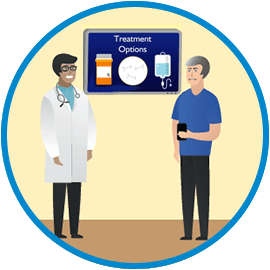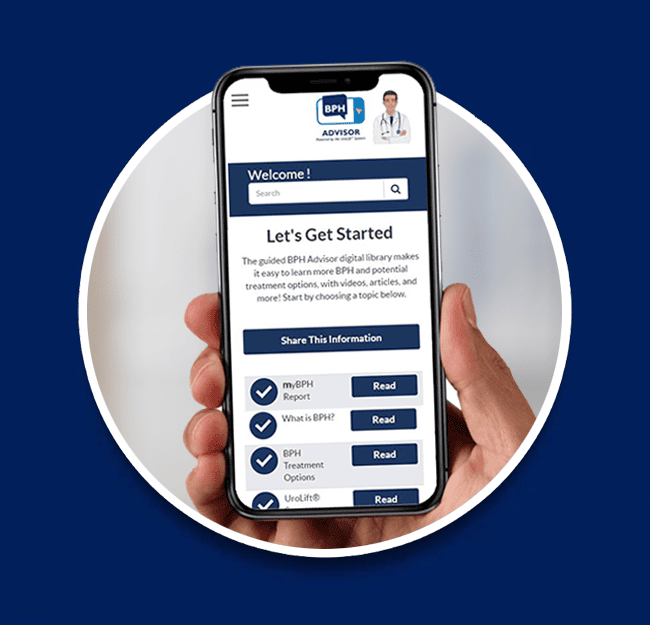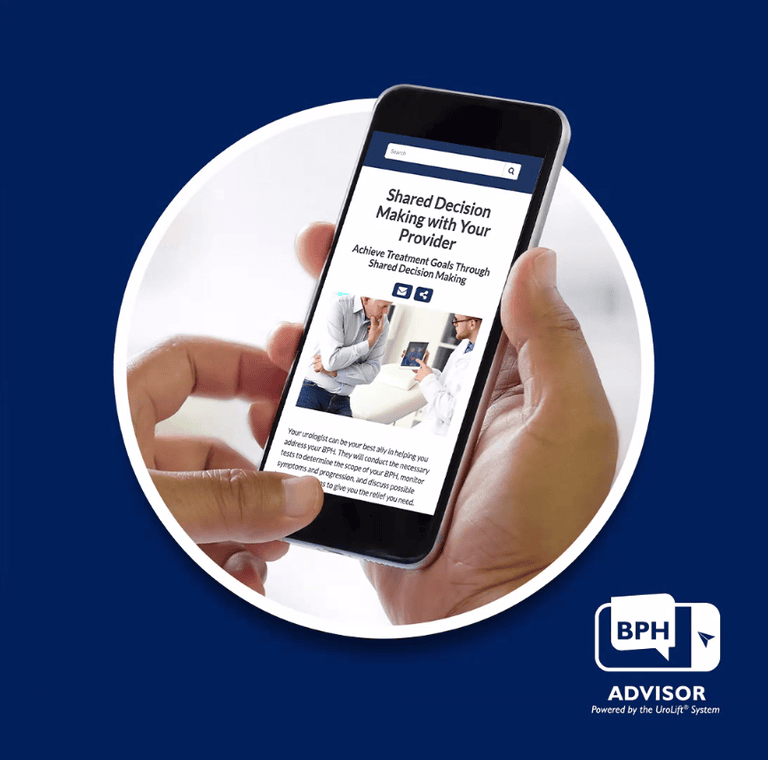BPH Advisor
Customized patient education program on enlarged prostate—developed with the input of board-certified urologists.
Welcome!
If you have a frequent need to urinate or have trouble urinating, you may have an enlarged prostate (Benign Prostatic Hyperplasia, or BPH). You're not alone.
Over 40% of men in their 50s and 70% of men in their 60s have BPH1—and while it is a benign condition, it can greatly affect quality of life.
BPH Advisor is a free, personalized education program to help you:
- Obtain and understand your BPH symptom score
- Learn about BPH and potential treatment options
- Share your report with your doctor, and decide together what’s best for you
How it works

1. Complete a brief questionnaire to assess your symptoms and preferences.

2. Get your myBPH report and access to the BPH Advisor digital library.

3. Share your myBPH report and treatment goals with a trusted physician.

Access to Current, Reliable Information Is Key
Even after diagnosis, it can be challenging to identify the best treatment options and what fits your individual preferences. Do you want to continue with "watchful waiting"? Try medication? Consider having a procedure that may allow you to get off BPH medication? If so, which procedure is right for you?
It's all about shared decision making
When it comes to a treatment plan, patients want to make an informed decision in partnership with their physician.2
Developed with the input of board-certified urologists, BPH Advisor is a free online program, sponsored by the makers of the UroLift® System, that helps patients obtain a current BPH symptom score, then learn about the condition and potential treatment options. The BPH Advisor digital library makes it easy, with videos and articles that reference clinical publications and guidelines from the American Urological Association (AUA).

We respect your privacy
For information about user privacy and terms of use for this program, including how participant information may be used and shared, please click here.
Share this page:

Your Score and More
Get the Free App
Get your detailed MyBPH report with BPH Advisor™ and learn more about treatment options. Get the app or visit BPHAdvisor.com today.
Upcoming Educational Events
Check out in-person and online educational events about BPH and the UroLift™ System or view recorded webinars.
Read the BPH Blog
Check out these helpful articles on BPH and related topics.
References
1. Berry, et al., Journal of Urology 1984
2. Barry M, Edgman-Levitan, S, NEJM 2012
MAC 01744-02 Rev A